Should one seek refreshment in a chilled broth, a jolt of spice to awaken the senses, or the meticulous touch of craftsmanship? This summer, each style brings a different approach to noodles. Four establishments in particular stand out for their creativity and contemporary reinterpretations of tradition.
Singular ‘Soba’ with Coriander Roots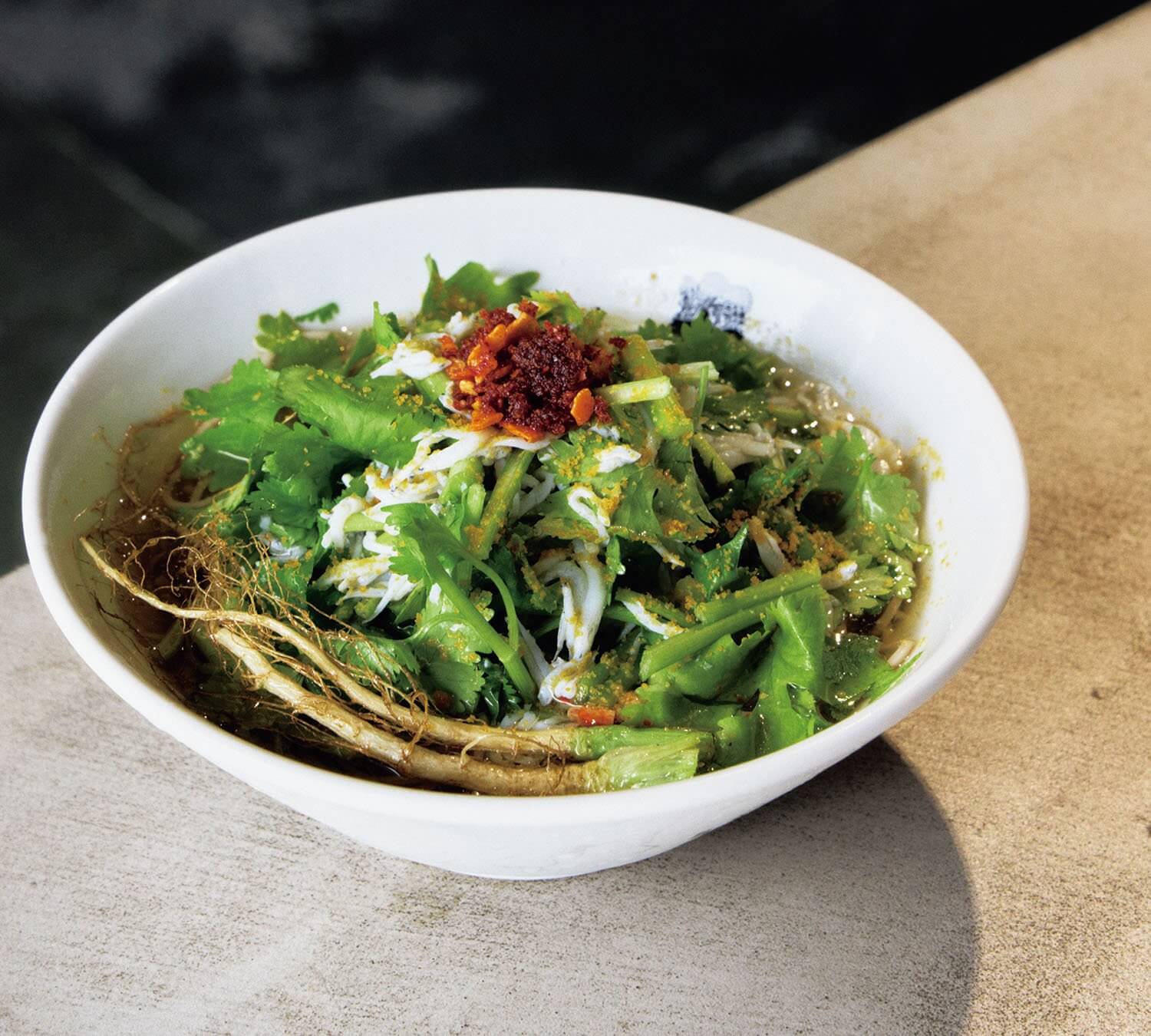
Summer’s standout dish, ‘Yamamori Pakuchi Shirasu to Karasumi’ (¥1,540). Coriander is served whole, its roots lightly fried, topped with a hint of ‘ra-yu’ chili oil.
At Yose, a hybrid space where fashion, vinyl and art books sit alongside an inventive kitchen, artistic director Takayuki Minami has shaped a venue that functions as a select shop for taste and culture. At its centre, a U-shaped counter recalls the spirit of sobamae—the custom of enjoying a drink with small dishes before a serving of soba—revisited here in a modern key.
The menu assembles specialties from across Japan: grilled gyoza by chef Micchan of Toyama, cocktails and small plates from Kyoto izakaya Okute. Yet the defining signature is the soba. Crafted from nihachi soba noodles (80% buckwheat to 20% wheat flour, a refined balance) by Kyoto’s Suba, they are accompanied by seasonal garnishes.
This summer’s standout, ‘Yamamori Pakuchi Shirasu to Karasumi’, impresses both visually and in flavour. Served in a Kansai-style dashi of rishiri konbu (noted for its mildness and saline depth), bonito, mackerel and urume sardine, it is topped with a mountain (yamamori) of coriander, roots intact, premium shirasu (whitebait) from heritage producer Yamari, and karasumi mullet roe. First enjoyed as an accompaniment to a drink, the toppings set the stage for a final return to the soba itself—a graceful, contemporary expression of tradition.
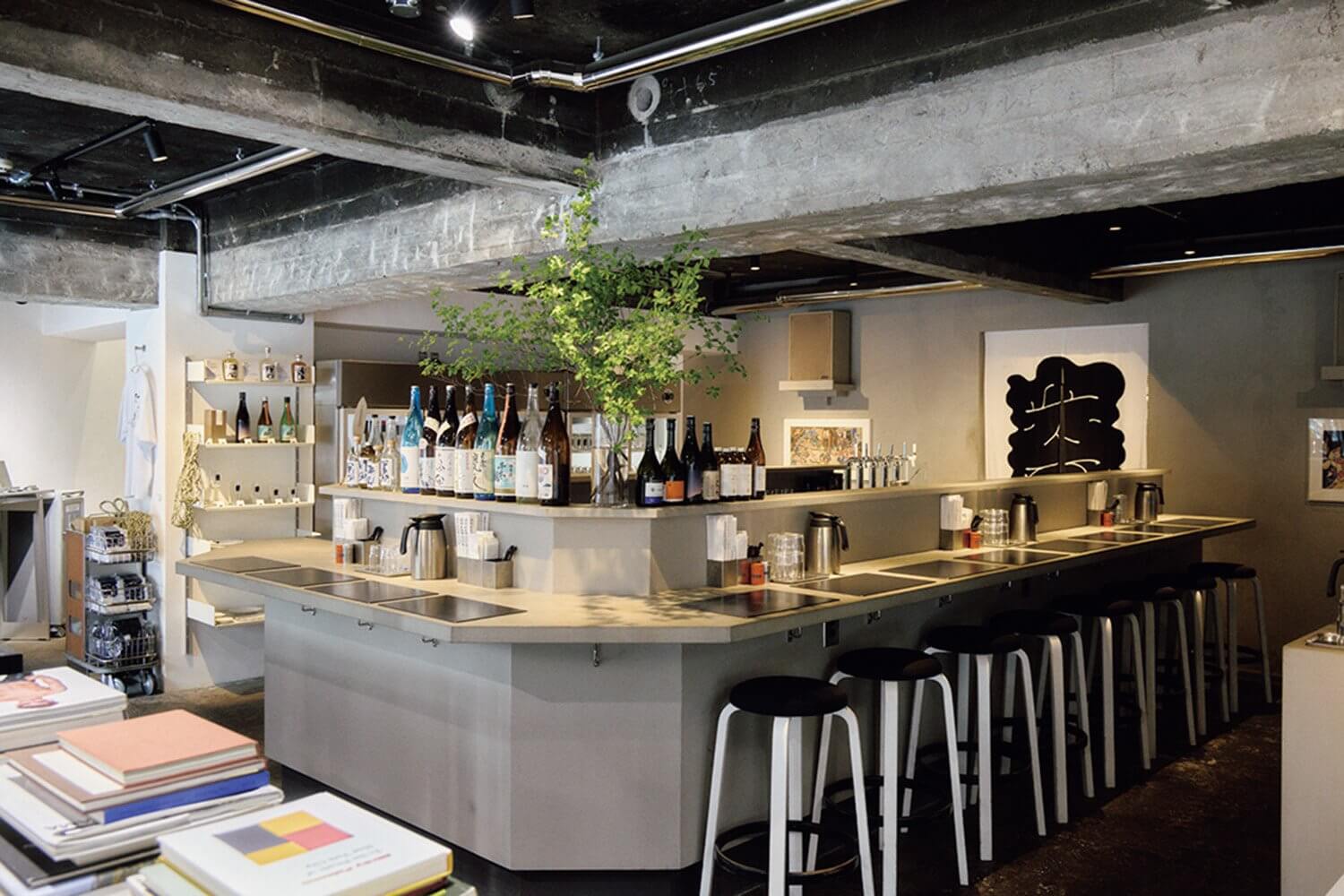
The U-shaped counter anchors the space. The drinks list features craft beers paired with ‘soba’, alongside natural wines priced mostly between ¥3,000 and ¥4,000.
Yose
Address: 3-38-10 Yoyogi, Shibuya-ku, Tokyo 1F
Phone: +8103-6381-6131
Open 11:30 am – 11 pm.
Closed Wednesday.
www.instagram.com/yose_tokyoA ‘sōmen’ laboratory with customised ‘mentaiko’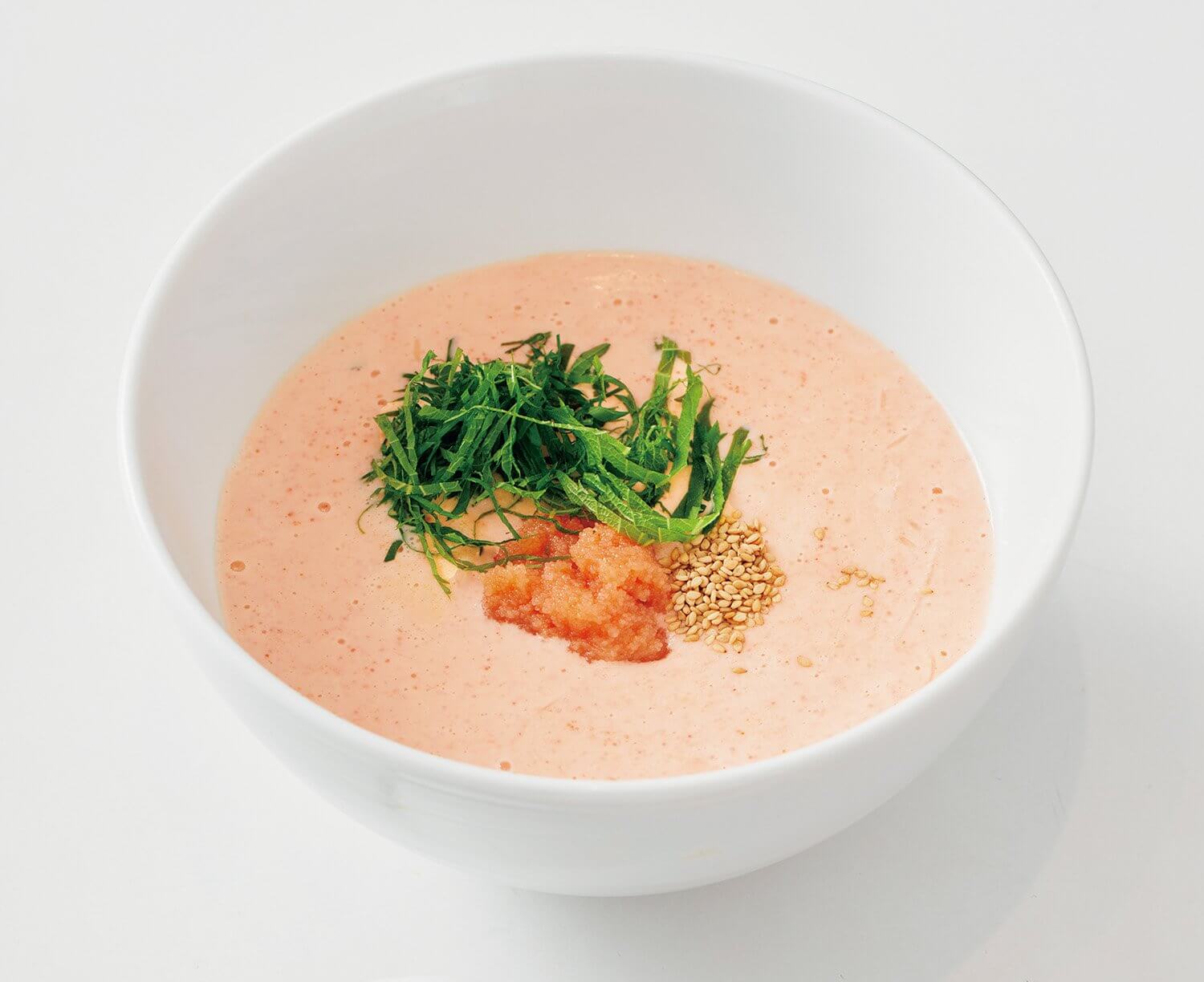
‘Mentaiko Cream Sōmen’ (¥1,474) balances the intensity of marinated cod roe with the softness of cream. Finished with ‘shiso’ and sesame, the dish is rich yet feather-light.
In Tokyo, Sōmen Sososo devotes itself entirely to exceptional sōmen made from Shima no Hikari, an artisanal variety from Shōdoshima, one of Japan’s three key production regions. The approach is experimental: everything from portion size to seasoning and toppings can be tailored. Each bowl becomes a form of research, with diners and staff cast as fellow investigators.
Tomato pesto hints at Italy, while shiso brings a distinctly Japanese note. For those seeking inspiration, ‘research reports’ suggest tested combinations. Among them, a sōmen with marinated mentaiko roe stands out: served in a generous portion (a bundle and a half of noodles), its rich sauce is lifted by the natural lightness of sōmen, underpinned by noodles of unexpected firmness. An inventive reinterpretation that refreshes the image of a centuries-old staple.
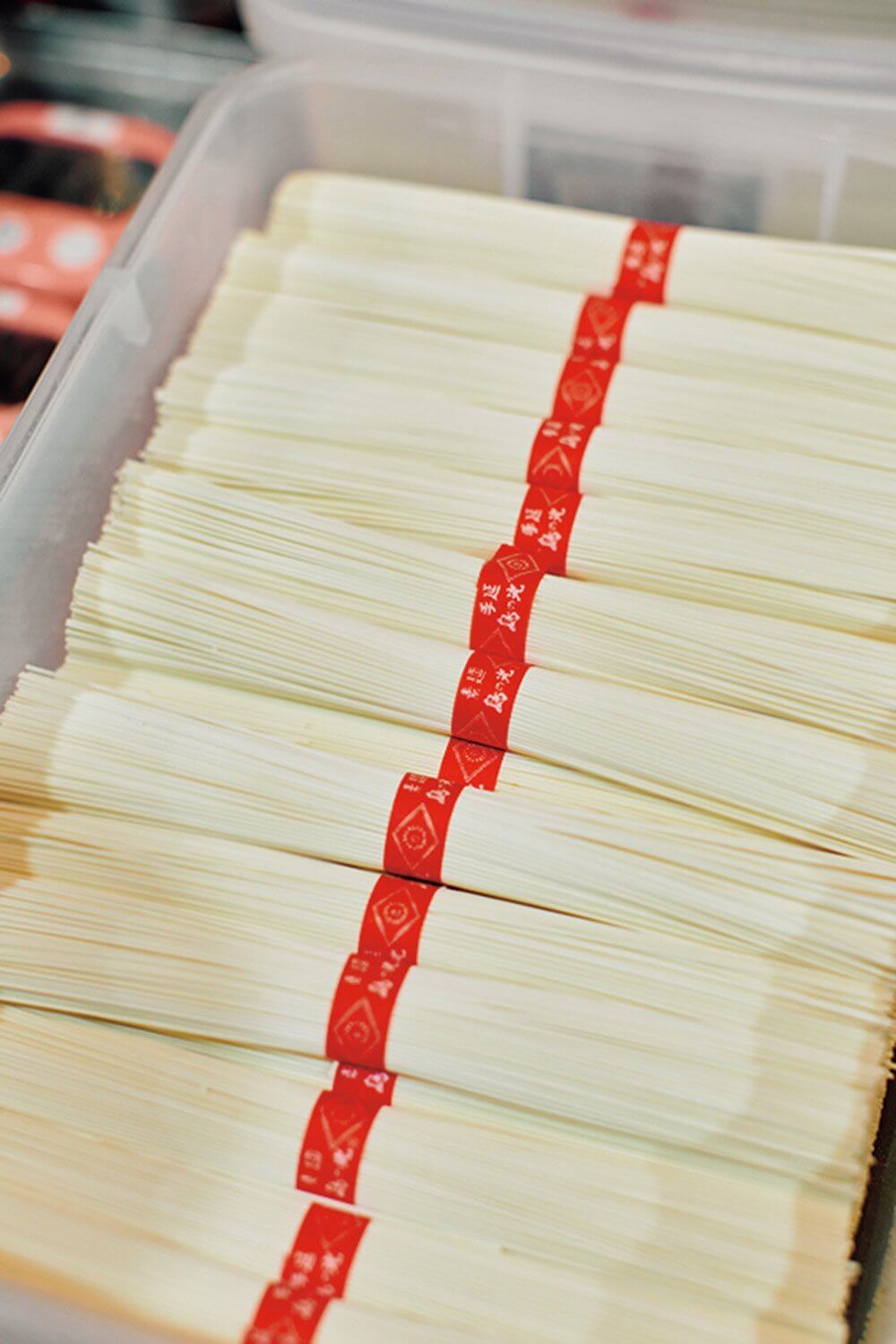
Shima no Hikari noodles come in three styles: red label (standard), black (made with Hokkaidō wheat), and gold (using Sanuki ‘udon’ wheat). Their firm texture is such that they can be enjoyed unadorned.
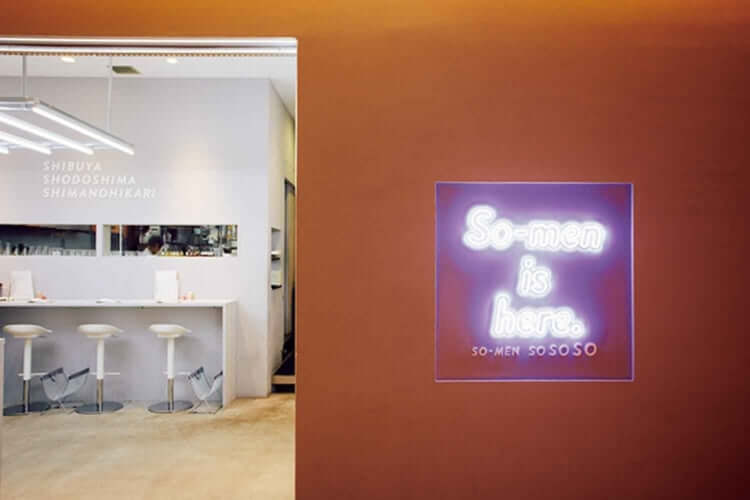
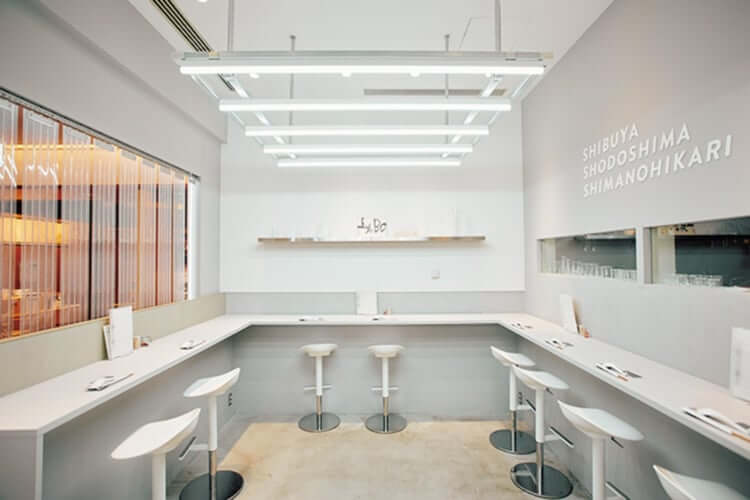
Left: a neon logo marks the entrance. Natural wines, craft beers and sake are paired with small plates before finishing with ‘sōmen’. Right: a pared-back interior evokes a laboratory, with staff in white coats serving drinks in beaker-shaped glasses—a culinary experiment.
Sōmen Sososo Kenkyūshitsu
Address: Shibuya Hikarie 6F, 2-21-1 Shibuya, Shibuya-ku, Tokyo
Phone: +8103-6450-6795
Open 11 am – 10 pm.
Closed on Shibuya Hikarie holidays.
www.instagram.com/somensososoThe freshness of ‘sudachi’ and the sweetness of fig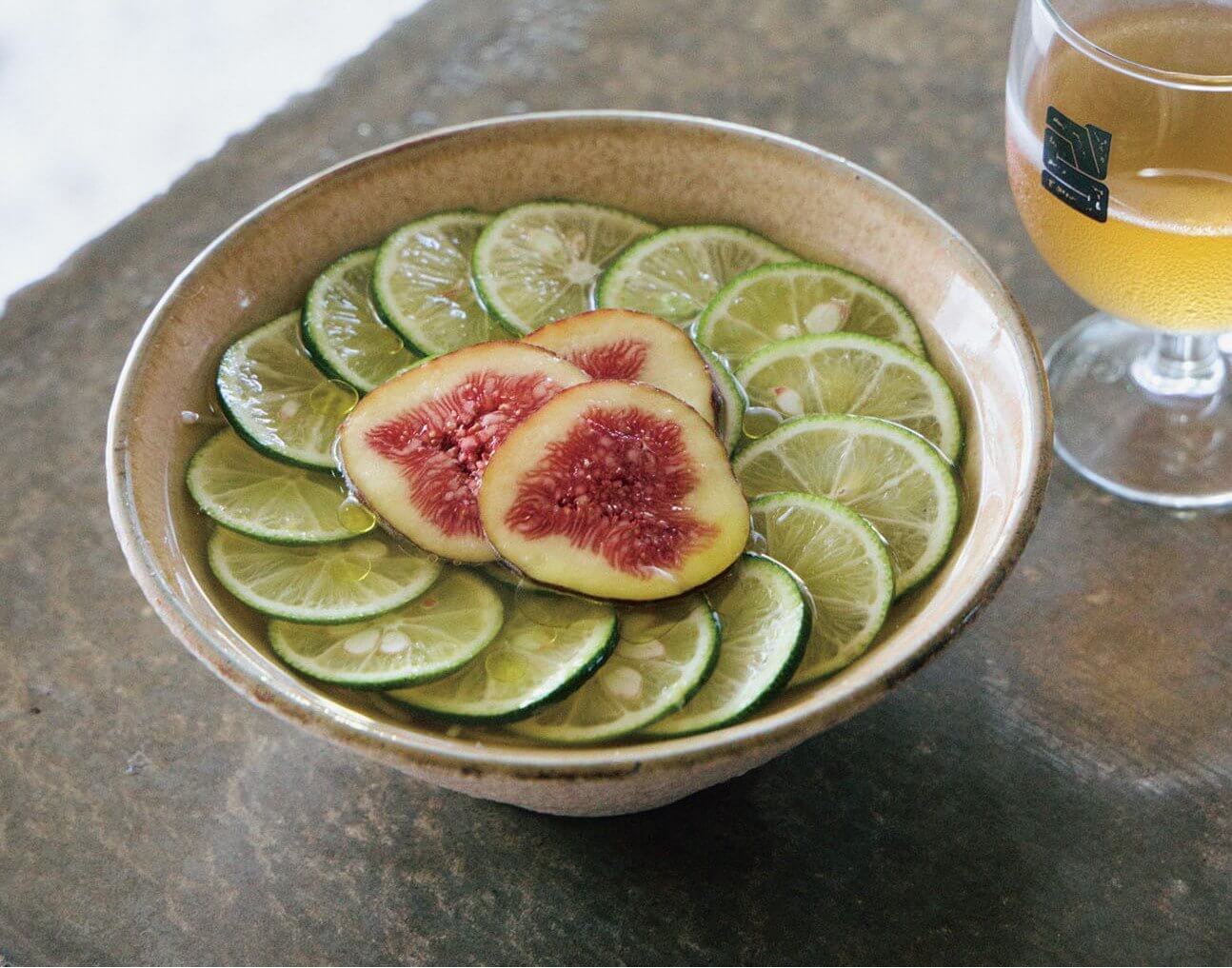
‘Sudachi Ichijiku cold soba’ (¥1,500). The menu also includes rice bowls such as ‘Dashi Rice with Aonori Butter’ (¥350).
First opened in Kyoto on New Year’s Eve 2021, Suba has become a pioneer of tachigui soba—soba eaten standing up—updated for a contemporary audience. In 2024, the establishment opened a Tokyo outpost in Shibuya, sharing a building with Virtus wine cellar: soba on the ground floor, bottles upstairs.
The menu features around ten signature soba dishes, alongside three seasonal creations that change monthly. Pairings are often unexpected: shijimi clams from Lake Shinji with green mandarin oil, funagata mushrooms with karasenju (a delicacy akin to mullet roe but from different fish). For summer, the standout is the ‘Sudachi Ichijiku’. House-made nihachi soba is topped with translucent slices of Tokushima sudachi citrus and figs from Awaji, finished with a touch of olive oil. The result is a luminous composition where sharp citrus notes meet the softness of ripe fruit—a refreshing, finely balanced dish for high summer.
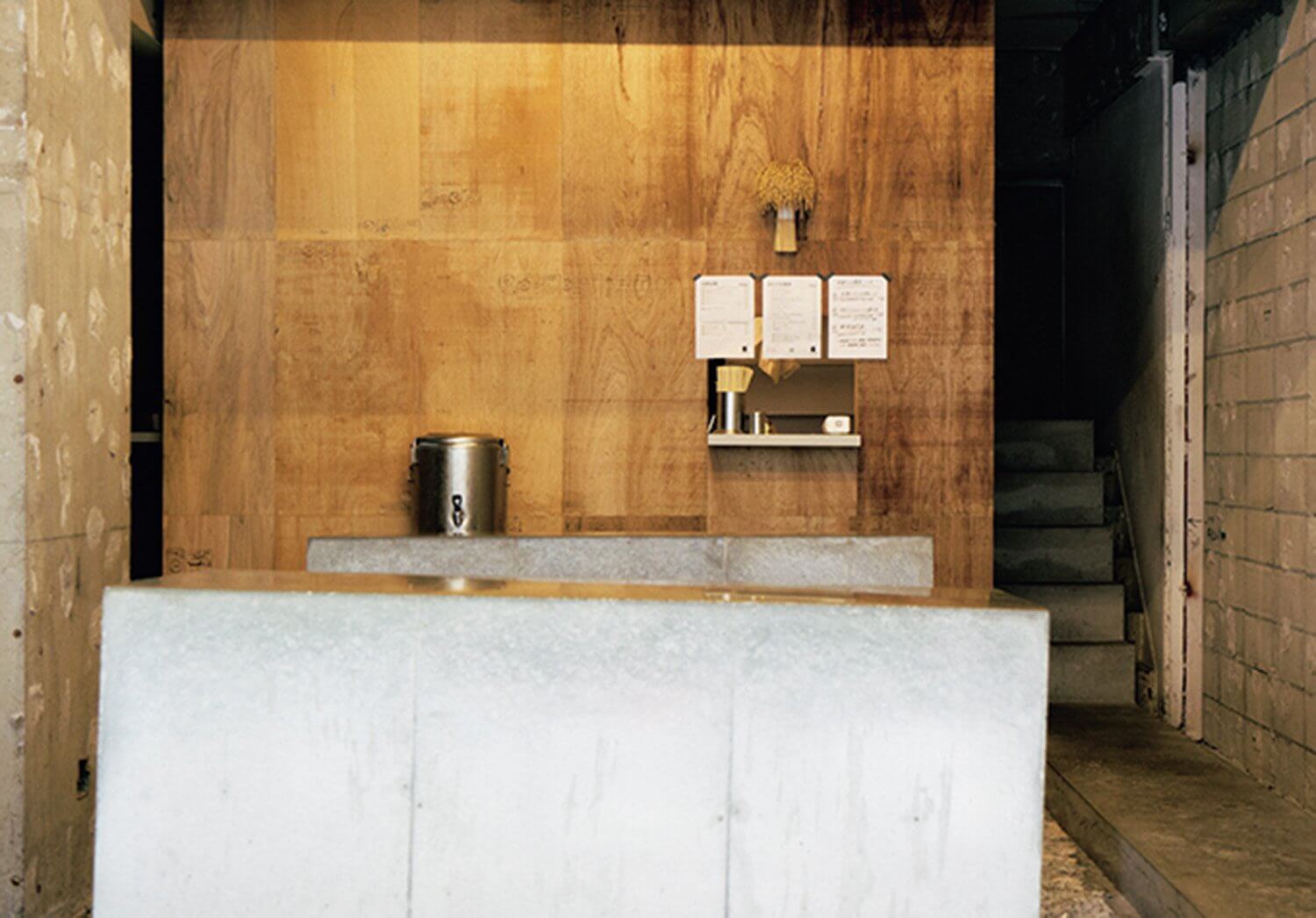
A raw interior by YUSUKE SEKI STUDIO, also behind the Kyoto flagship. Tables are intentionally set at a slight angle.
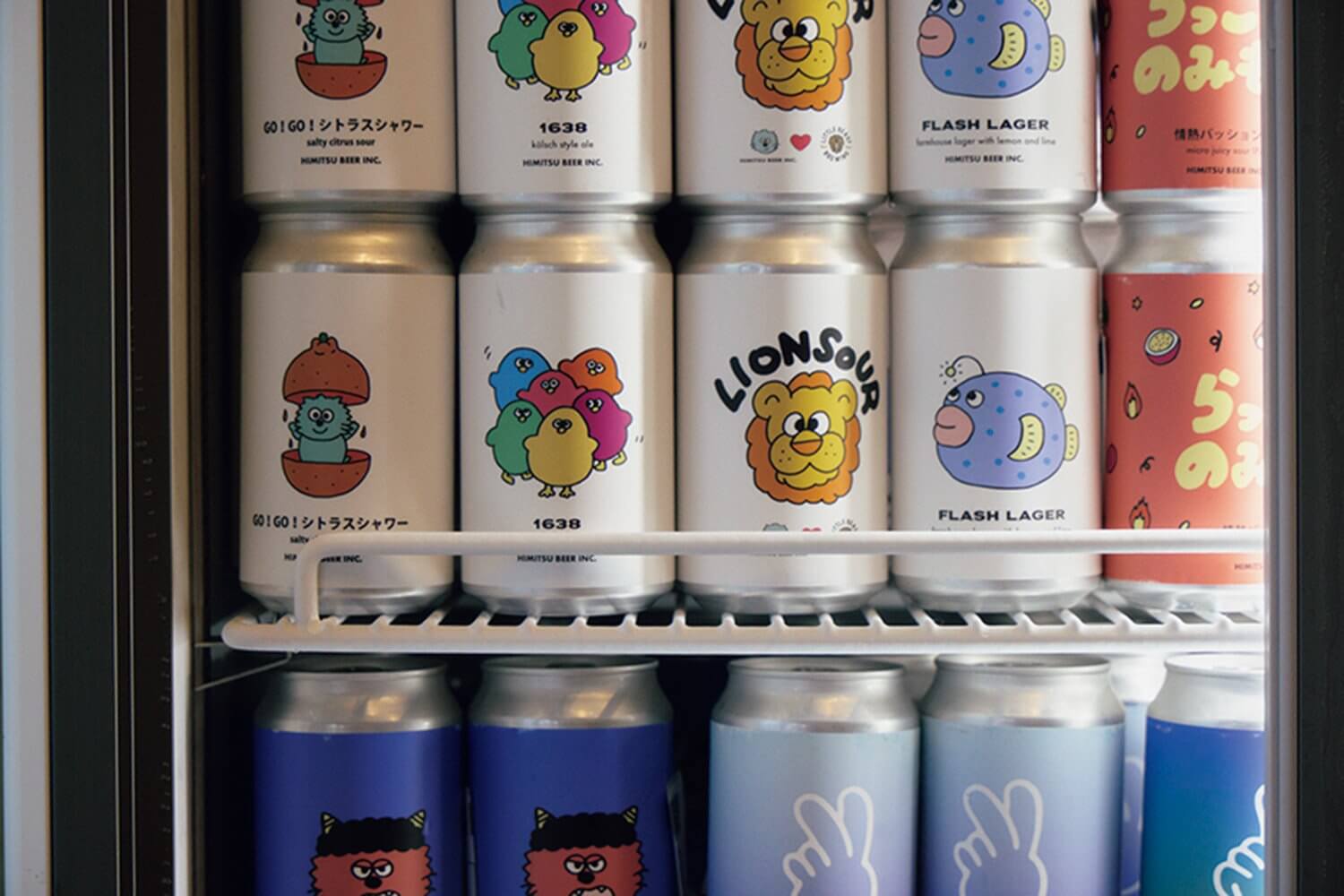
The drinks list features craft beers and wines by the glass, with the option to bring in bottles purchased upstairs at Virtus. A hybrid creation, the ‘Dashi-Wari Wine’, is also offered.
Suba VS
Address: 1-15-8 Miyamasu On Building 1F, Shibuya, Tokyo
Phone: +8170-3080-1847
Open 12 pm – 11 pm.
Irregular closing days.
www.instagram.com/subasoba_vsA white curry ‘udon’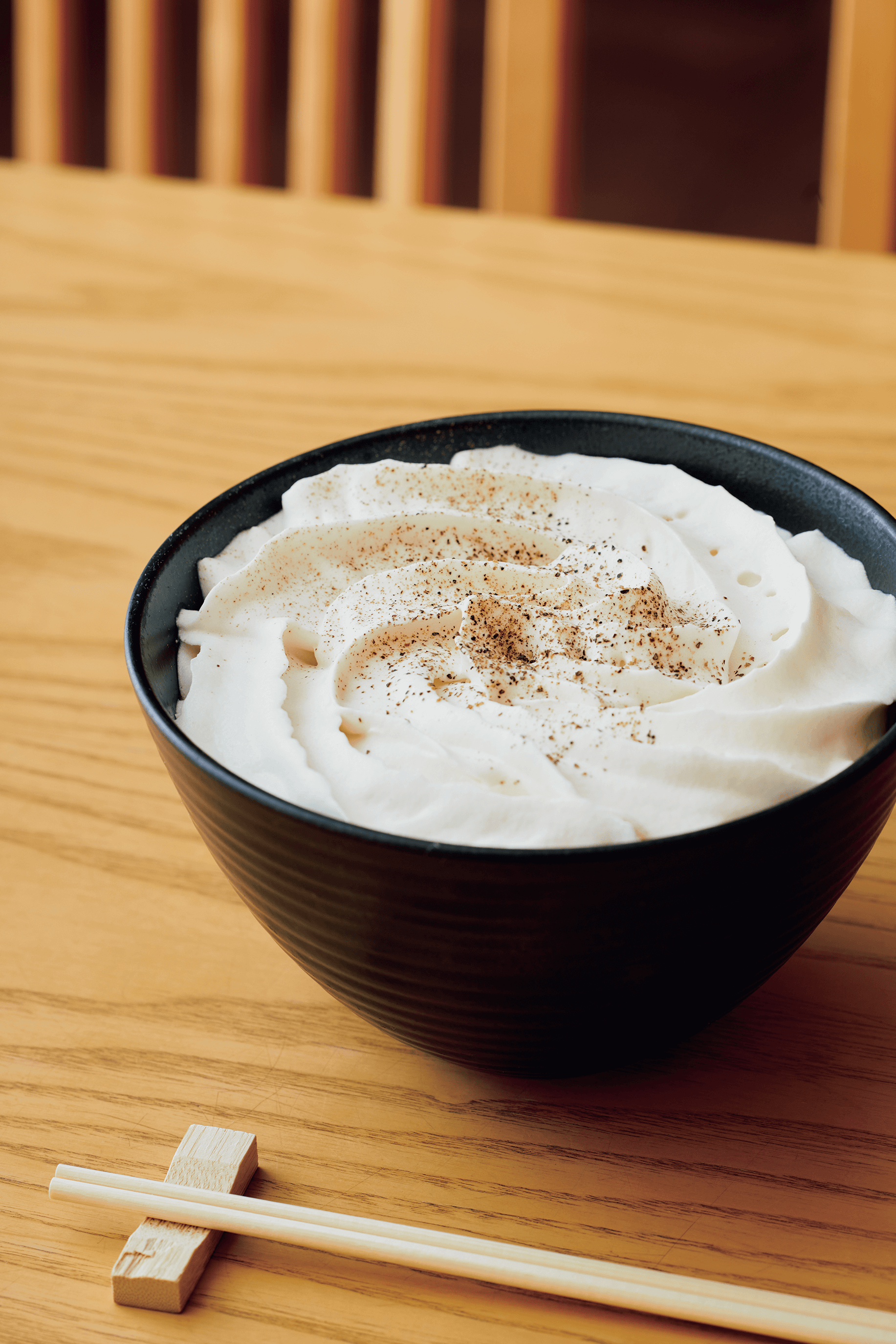
The house specialty, ‘White Curry Udon’ (¥1,320), available mild or spicy. A potato espuma gradually blends with the beef-based curry broth, yielding a creamy balance.
In Kanagawa, Udon Roji takes udon into unexpected territory by borrowing techniques from French gastronomy. Its signature dish, ‘White Curry Udon,’ looks more like a dessert at first glance. The whiteness comes from a potato emulsion whipped into an airy mousse using a classic French technique. The light, creamy foam gives way to the gentle sweetness of the tuber before revealing a curry broth of subtle spice and layered umami.
The thick, yielding udon deliver their trademark generosity, while the broth—combining beef stock and bonito dashi—offers refined depth without heaviness. Structured in three layers—foam, noodles, broth—the dish unfolds in sequence before uniting into a whole. Both visually arresting and technically precise, it is the kind of creation most diners finish down to the last drop.
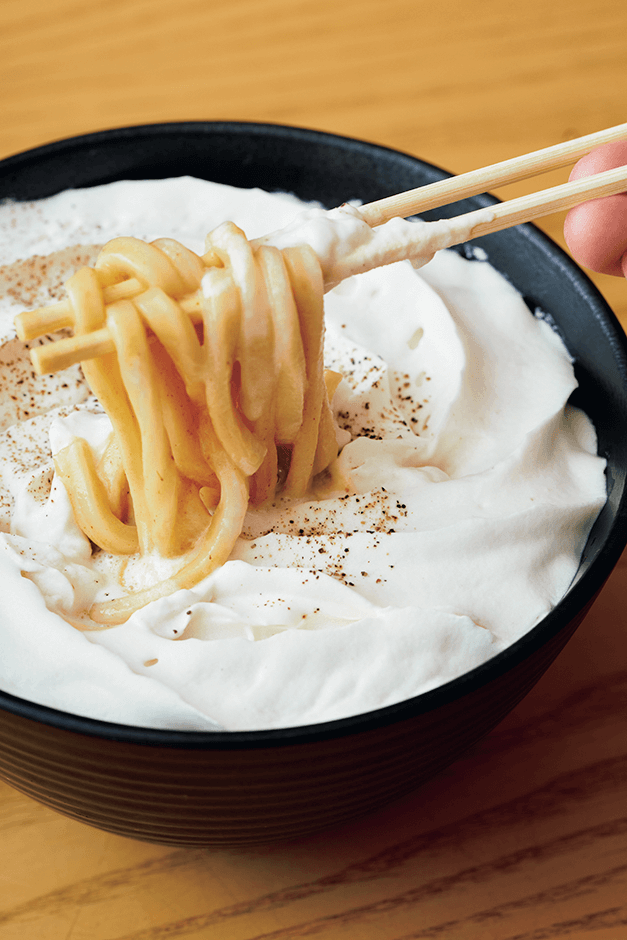
Homemade ‘udon’ are prepared with wholegrain wheat from Hokkaidō, rarely used for this style. The aroma and density of the noodles reflect the kitchen’s focus on raw ingredients.
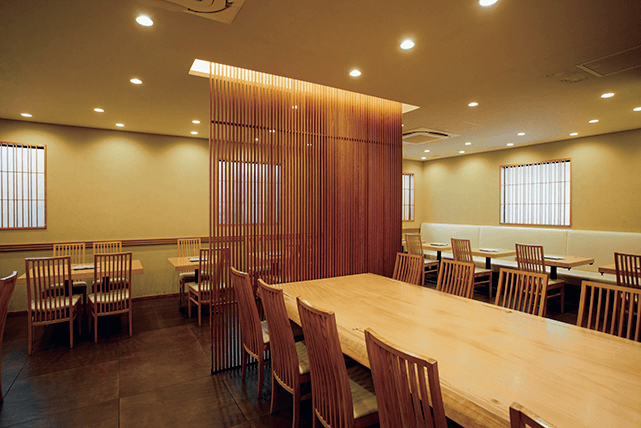
A chic, contemporary Japanese interior with lattice details and refined finishes. In the evening, premium skewers and sake precede a final bowl of ‘udon’.
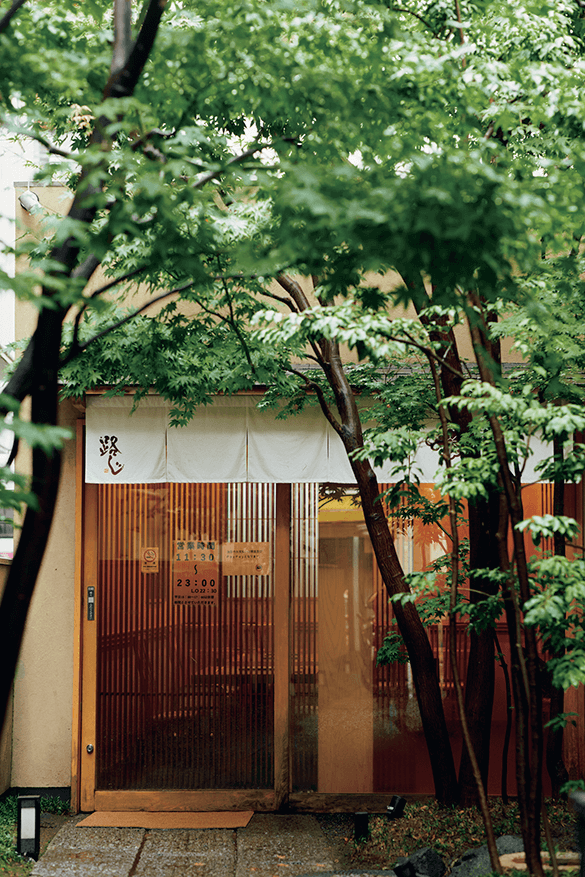
Just steps from Mizonokuchi’s busy streets, the restaurant is also known for its ‘Mentaiko Mascarpone Udon’ (¥1,320) and ‘Tempura Udon’ (¥1,430).
Udon Roji
Address: 1-11-7 Mizonokuchi, Takatsu-ku, Kawasaki, Kanagawa
Phone: +8144-811-6644
Mon–Fri: 11:30 am – 3 pm / 5 pm – 11 pm. Sat, Sun, holidays: 11:30 am – 11 pm.
Closed January 1–4.

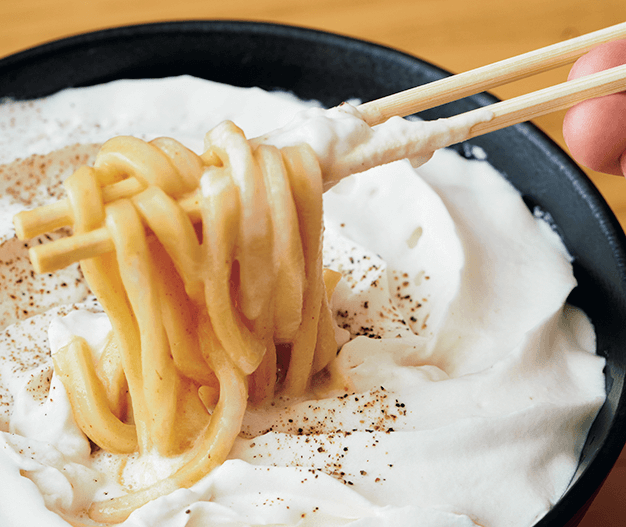
Dining and Cooking